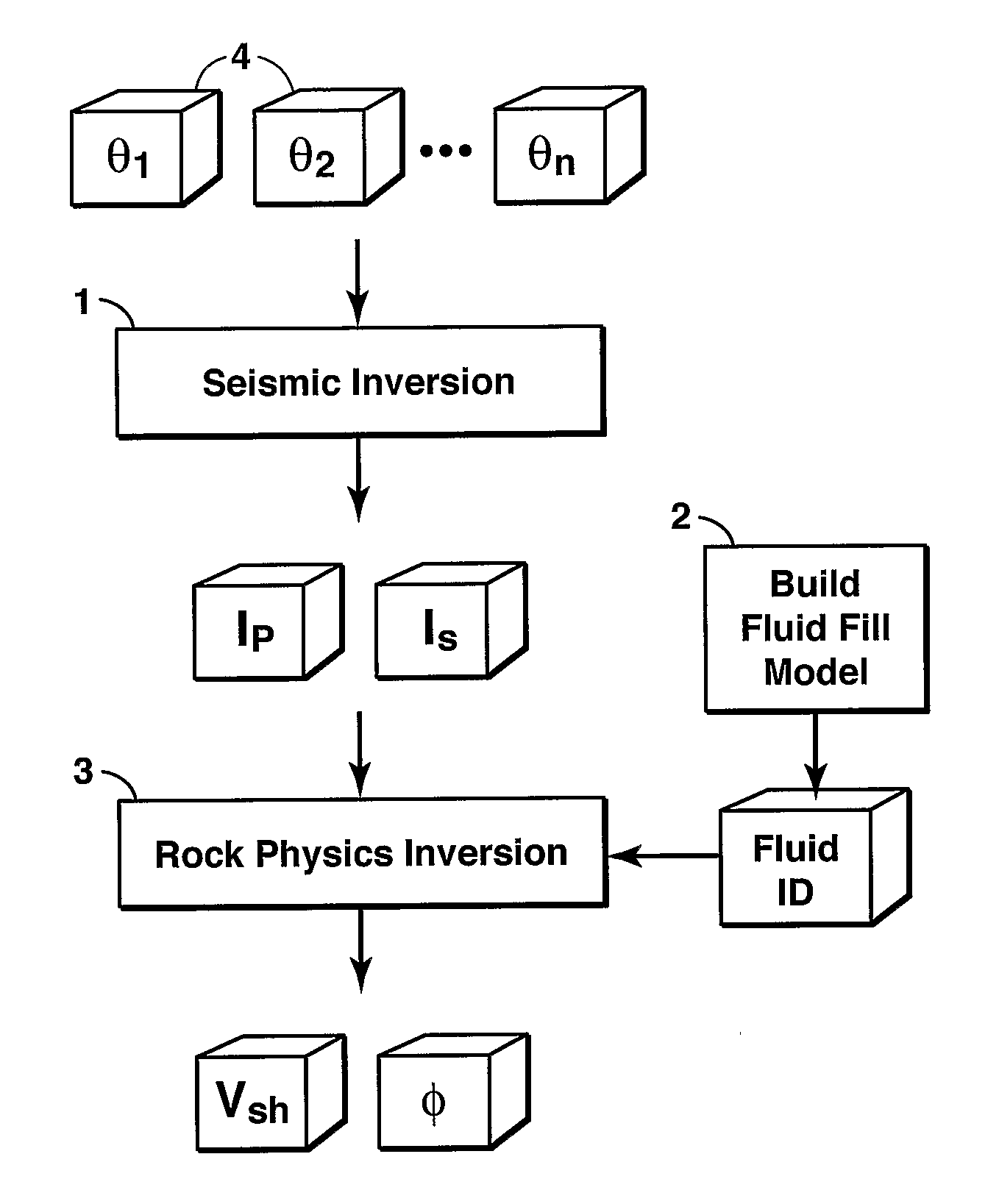Method For Predicting Lithology And Porosity From Seismic Reflection Data
a seismic reflection and data technology, applied in seismology for waterlogging, instruments, nuclear elements, etc., can solve the problems of large sampling data, statistically significant sampling, and generally biased reservoir properties samples, so as to speed up and simplify the solution process
- Summary
- Abstract
- Description
- Claims
- Application Information
AI Technical Summary
Benefits of technology
Problems solved by technology
Method used
Image
Examples
examples
[0030] The present inventive method was applied to seismic data acquired over a reservoir containing gas, oil and brine. FIG. 2 shows a 3-D image of the inferred sand channel winding through the inverted VSH volume (the shaly parts have been made invisible) produced by the present inventive method. Two wells drilled in the reservoir confirm the location of the sands and the volume percentages. In addition to aiding in well placement, accurate sand / shale volume predictions such as that represented by FIG. 2 can be used to estimate reserves, both of which are important in the early development phases of a field when well control is limited and business risk is greatest.
PUM
 Login to View More
Login to View More Abstract
Description
Claims
Application Information
 Login to View More
Login to View More - R&D
- Intellectual Property
- Life Sciences
- Materials
- Tech Scout
- Unparalleled Data Quality
- Higher Quality Content
- 60% Fewer Hallucinations
Browse by: Latest US Patents, China's latest patents, Technical Efficacy Thesaurus, Application Domain, Technology Topic, Popular Technical Reports.
© 2025 PatSnap. All rights reserved.Legal|Privacy policy|Modern Slavery Act Transparency Statement|Sitemap|About US| Contact US: help@patsnap.com



